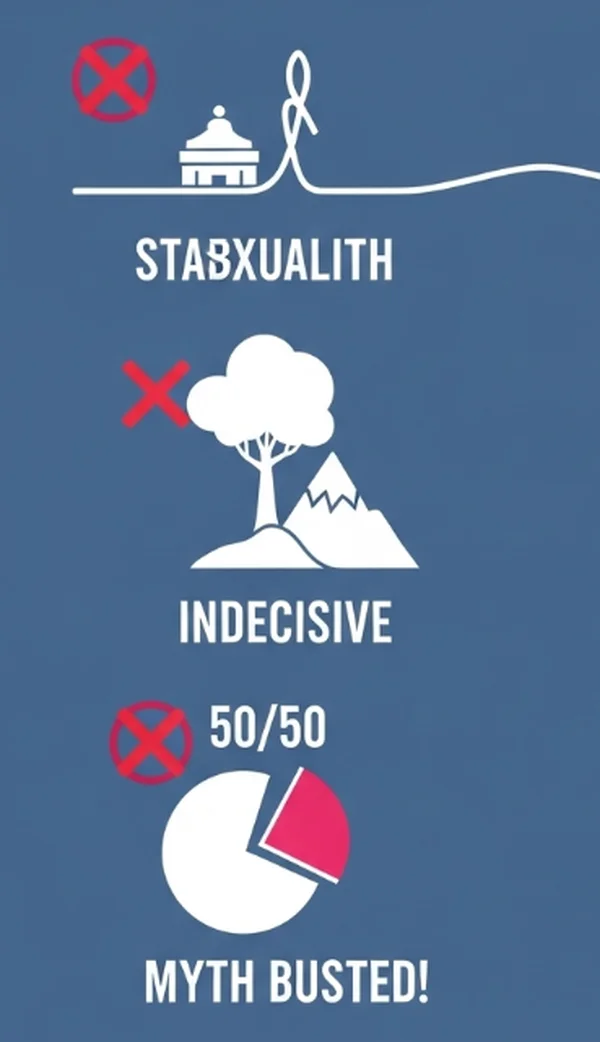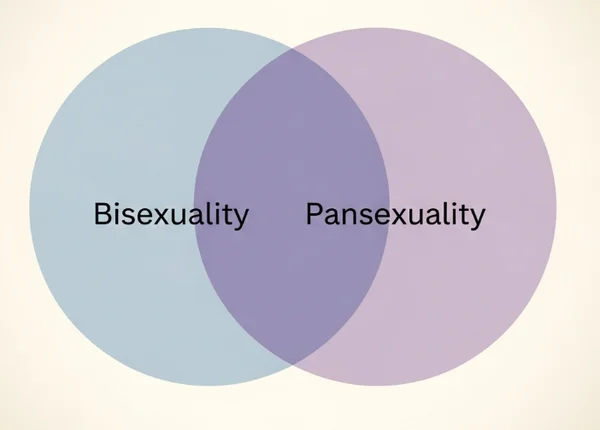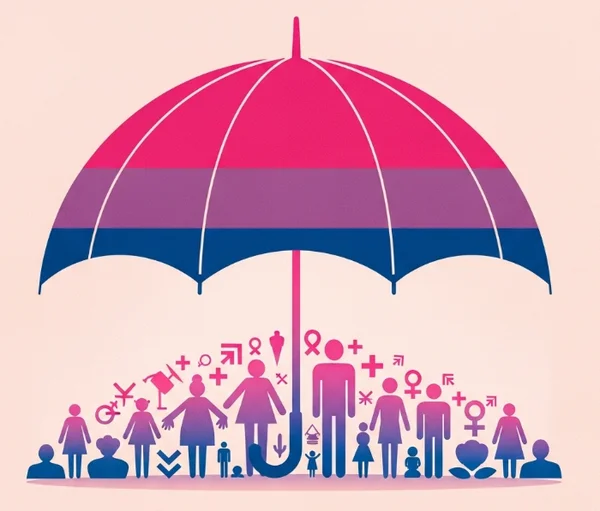Bisexuality Explained: Beyond "Either/Or" Thinking
The world of sexual orientation is beautifully diverse, yet terms like "bisexuality" are often misunderstood or oversimplified. What is bisexuality, truly? It's more than just a middle ground or a phase. This article aims to provide bisexuality explained in a clear and inclusive way, delve into understanding bisexuality's nuances, touch upon related pansexuality info, and help dispel common myths. If you're questioning "Am I bisexual?", or simply seeking to learn, you're in the right place.
What Does It Mean to Be Bisexual? Core Concepts
At its heart, bisexuality refers to the potential for attraction to more than one gender. It's a distinct sexual orientation, not a halfway point between gay and straight. Let's explore the core definition.
Attraction to More Than One Gender: The Foundation
The foundational understanding of bisexuality is an emotional, romantic, and/or sexual attraction to people of multiple genders. This doesn't mean attraction to all genders necessarily (which is often how pansexuality is described), nor does it imply the same degree of attraction to all genders one is attracted to.

Understanding the "Bi" in Bisexuality: Historical and Modern Meanings
The bi prefix literally means "two." Historically, this was often interpreted in a binary gender context (attraction to men and women). However, the modern interpretation within the bisexual community is often more inclusive. Many bisexual people and organizations define bisexuality as attraction to genders like one's own and to genders different from one's own, or simply attraction to two or more genders. The understanding of bisexuality explained has evolved to be more encompassing.
Debunking Common Myths and Stereotypes About Bisexuality
Unfortunately, bisexual myths and harmful stereotypes are prevalent. Let's address some of the most common ones for better understanding bisexuality:
Bisexuality is Just a Phase or Confusion
This is perhaps one of the most damaging myths. Bisexuality is a valid identity and a legitimate sexual orientation stability for many. It is not a phase on the way to being gay or straight, nor is it a sign of confusion. For many, it is a lifelong orientation.
Bisexual People Are Indecisive or Promiscuous
These are harmful stereotypes that have no basis in reality. A person's sexual orientation does not dictate their capacity for commitment or their relationship choices, including monogamy. Bisexual individuals are just as capable of faithful, loving relationships as anyone else.
Attraction Must Be Equally Split (50/50)
Do bisexuals like one gender more than another sometimes? Yes, and that's perfectly normal. Attraction exists on a spectrum. A bisexual person might feel a stronger preference for one gender over others, or their attractions might fluctuate over time. It is not equal attraction (50/50) by definition.

Bisexuality vs. Pansexuality: Understanding the Nuances
Often, discussions about understanding bisexuality will also include pansexuality info. Bisexuality vs pansexuality is a common point of inquiry. While there's overlap, there are distinct nuances.
Defining Pansexuality: Attraction Regardless of Gender
The pansexuality definition generally refers to attraction to people regardless of their sex or gender identity. The emphasis is on attraction to individuals, where gender is not a determining factor. It implies potential attraction to all genders.
Key Differences and Overlaps: How Individuals Identify
The key differences often lie in how gender factors into attraction. Some bisexual individuals do see gender as a factor in their attraction (e.g., "I'm attracted to men and women"), while for many pansexual individuals, gender is explicitly not a factor. However, there are significant overlaps, and many people find both terms could apply. Personal identification and self-labeling are paramount.
Can Someone Be Both Bisexual and Pansexual?
Some individuals identify with both terms, perhaps seeing bisexuality as an umbrella term that includes pansexuality, or they might use them interchangeably. There are also coexisting labels where one might feel more fitting at different times. The personal interpretation is what matters most.

Exploring Your Own Attractions: Is Bisexuality a Fit for You?
If you're questioning "Am I bisexual?", how can you explore this? It's a journey of self-reflection.
Reflecting on Your Attraction Patterns: A Personal Inventory
Consider your attraction patterns and personal experiences. Have you felt romantic or sexual attraction to people of more than one gender? Journaling or quiet reflection can help uncover these patterns.
How Online Quizzes (Like a Bisexual Test or Gay Test) Might Offer Insights
Online quizzes, such as a specific bisexual test online or even a broader gay test, can act as a reflection tool. They aren't a diagnosis but can provide questions that prompt deeper thought about your attractions. The results might suggest areas to explore further.
Embracing the "Bi Umbrella": Finding Your Place
The concept of the "bi umbrella" acknowledges that bisexuality encompasses a wide spectrum of attraction and experiences. It's an inclusive community term, recognizing that there's no single "right" way to be bisexual.

Understanding Bisexuality: A Journey of Discovery
Ultimately, understanding bisexuality – whether your own or that of others – is a journey. It requires an open mind, a willingness to challenge preconceived notions, and respect for individual experiences and identities. The landscape of lgbtq+ identity is rich and varied.
What are your thoughts or questions about bisexuality? Have you encountered other myths you'd like to discuss? Sharing our understanding helps build a more inclusive world.
If you're exploring your own attractions, remember that tools like the sexual orientation test on GayTest.me are available to support your reflection.
Bisexuality Explained and Understood
-
Can my attraction to different genders change over time?
Yes, for some people, the intensity or focus of their attraction can shift over time. This is a normal part of human sexuality and doesn't invalidate a bisexual identity. Some refer to this as sexual fluidity.
-
Do I need to have had experiences with multiple genders to be bisexual?
No. Sexual orientation is about attraction, not action or experience. You can be bisexual without having had romantic or sexual personal experiences with people of multiple genders. It's about your internal feelings and potential for attraction.
-
How is bisexuality different from being "curious"?
Curiosity can be a part of anyone's journey. Bisexuality, however, is a distinct sexual orientation involving attraction to more than one gender. While curiosity might lead to exploration, identifying as bisexual implies a more settled understanding of one's attraction patterns, though this understanding can still evolve.
-
Are there specific resources for bisexual individuals?
Yes! Many LGBTQ+ organizations have resources and communities specifically for bisexual and bi+ individuals. Look for groups like BiNet USA, the Bisexual Resource Center, or local bi+ support networks. Our LGBTQ+ resources page might also point you in the right direction. (Adjust link if a specific resource page exists)
-
What if I'm attracted to men and non-binary people, am I bisexual?
Many definitions of bisexuality are inclusive of attraction to non-binary people (as it's attraction to "genders like one's own and different," or "two or more genders"). Some people in this situation identify as bisexual, some as pansexual, some as another term, or use multiple labels. It's about what label, if any, feels most accurate to you. Exploring your feelings with a bisexual test could be one way to start reflecting.